Sukhoi Jet Aircraft: A Cutting Edge Fighter Aircraft for More Than 70 Years.
Sukhoi Design Bureau - The Legacy of Pavel Sukhoi
Of the big names in aviation in the 1930’s and 1940’s - Wright, Curtis, Mikoyan-Gurevich, Hawker, Focke-Wulf, Mitsubishi just to name a few - most are long since defunct, dismantled, or otherwise sold off to various buyers. Many have not, in any incarnation, produced a combat aircraft in decades. Their founders long dead, their factories destroyed, mothballed, or turned to other use, their names are known only to history.
There are, of course, exceptions. Saab of Sweden has been building fighters for decades - the Gripen fighter only their most recent entry. Dassault has been around for some time as well, and its Rafale is top notch. Lockheed produces the F-22, and still retains its name as part of the merger with Martin Marietta in 1995. And though it has been folded into a national Russian aviation group, Mikoyan Gurevich remains alive and well.
Then there is Sukhoi. Founded by Paval Sukhoi in the 1930’s era Soviet Union, Sukhoi as a company is less well-known than Mikoyan Gurevich, Sukhoi fighter jets are renowned worldwide for their maneuverability and functionality.
Sukhoi Jet Aircraft - Early on the Scene With Powerful Interceptors
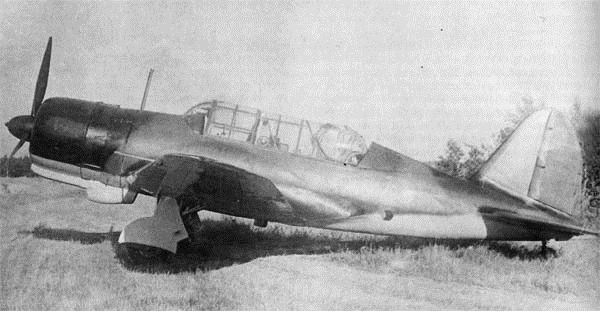
Sukhoi produced a number of aircraft through the Second World War, including the SU-2 Bomber which saw service over the Eastern Front. But the company truly took off in the immediate post Cold War era with the development of jet aircraft.
An early innovator in jet aircraft technology, Sukhoi focused on aircraft that could fly high and fast. Sukhoi jet aircraft broke out with the introduction of the SU-9 “Fishpot”, which set an altitude record by flying at over 90,000 feet in a test flight. Designed to defend the huge expanse of Soviet airspace from incursions by United States nuclear bombers in the event of a war, the SU-9 and its upgrade the SU-11 carried early radar and air to air missiles and could reach mach 1.6 in level flight - an achievement in the 1950’s and 1960’s.
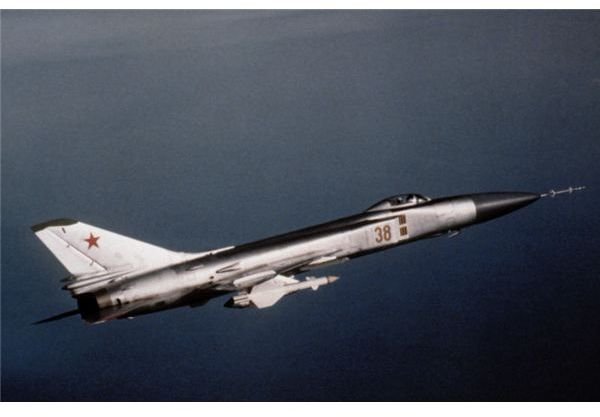
Sukhoi jet aircraft development in the interceptor sphere continued through the Cold War, and culminated in the SU-15 Flagon interceptor. Capable of speeds in excess of mach 2.0 in the 1960’s, the Flagon became the Soviet Union’s premier interceptor in the service of the PVO - the dedicated air defense arm of the Soviet Union. Never exported due to its exclusion of modern (for the time) technology, the SU-15 was a top tier Sukhoi jet aircraft until its retirement in the 1980s, and was even used by the Ukraine after the fall of the Soviet Union until the mid 1990’s.
Sukhoi Jet Aircraft - Ground Attack Aircraft
Sukhoi’s early designs for bombers in the World War Two era gave the bureau the experience in the requirements for successful ground attack aircraft. One of the most recognizable sukhoi jet aircraft lines it the “Fitter” series, which began with the SU-7 in the 1950’s and included the heavily redesigned Su-17/Su-20/Su-22 Fitter models, all of which were in heavy use by Soviet, Warsaw Pact, and other allied air forces throughout the Cold War. Some SU-7 ground attack aircraft are apparently still in service with the North Korean Air Force - a fairly amazing fact when the age of the design is considered.
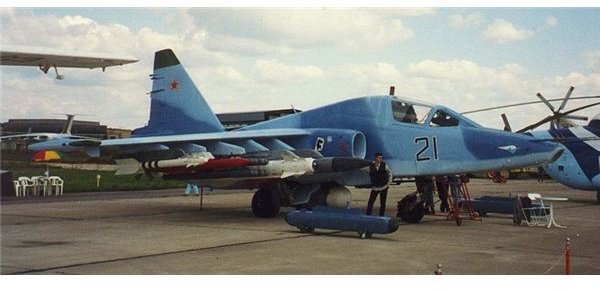
Sukhoi jet aircraft produced for the ground attack role came to their apex in the Cold War with the production of the SU-25 Frogfoot close support aircraft and the SU-24 Fencer strike bomber. Because the IL-2 Sturmovik ground attack aircraft became one of the saviors of the Soviet Union in World War Two, the Soviet military paid a great deal of attention to the use of aircraft in close support of ground forces. The SU-25 was Sukhoi’s answer to the A-10 Thunderbolt II, and
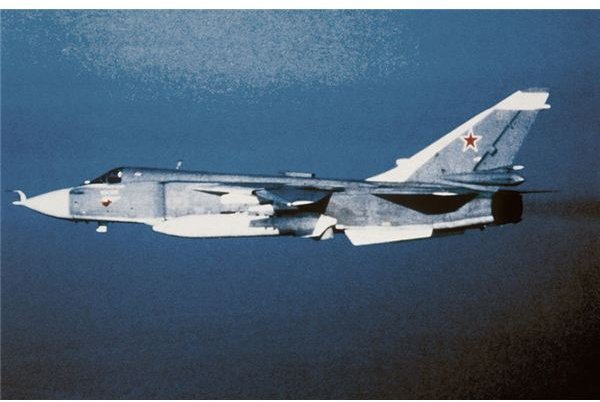
in a series of conflicts has played a key role in providing close air support to various nations’ armies. The SU-24 by contrast was a rather unique Sukhoi jet aircraft - it was similar to the Panavia Tornado and F-111 due to its utilization of swing wing technology and the focus on deep penetration of NATO airspace.
Sukhoi Fighter Aircraft: Rise to Dominance
The Sukhoi interceptor focus began to wane by the 1970’s, as Mikoyan Gurevich designs that broke the mach 3.0 barrier began to provide significant competition and the need for nuclear bomber interceptors declined with the widespread adoption of the intercontinental ballistic missile for the delivery of nuclear warheads. But the Sukhoi experience in both interceptors and ground attack aircraft served the group well, and as a result of the need to produce a competitor to the US F-15 Eagle air superiority fighter the most recognizable and pivotal Sukhoi fighter aircraft in the group’s history was designed: the Flanker.
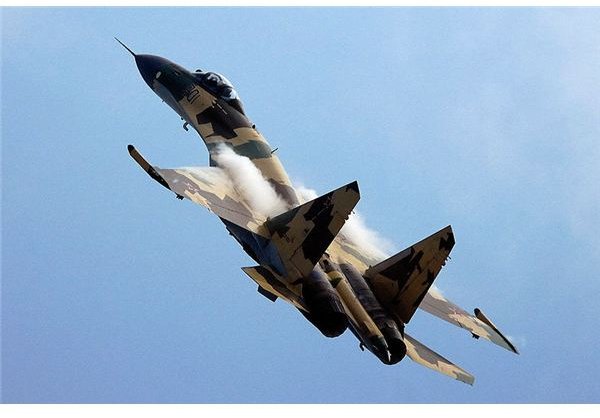
The Sukhoi SU-27 Flanker was the pinnacle of Soviet technology when it debuted in the mid 1980’s. Large but nimble, with powerful engines and a large load of weaponry, the SU-27 was a technological leap forward for the Soviet aviation industry. Incorporating lessons learned by the performance of Syrian aircraft over the Bekaa Valley in the early 1980’s as well as those of Vietnam and the Yom Kippur War, the SU-27 was designed specifically to obtain air superiority by engaging F-15 and other NATO air superiority fighters head on either while defending Warsaw Pact airspace or escorting SU-24 bombers on deep strike missions. Sukhoi fighter aircraft came to world prominence as the capabilities of the SU-27 became known.
Sukhoi Fighter Aircraft - The Future
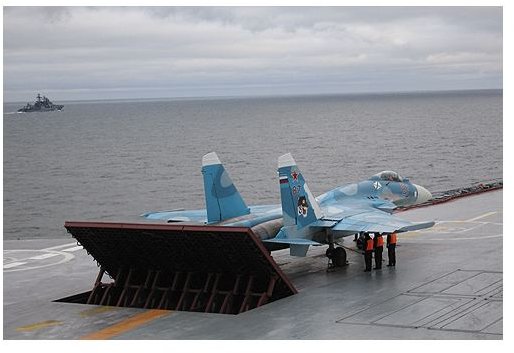
Although the end of the Soviet Union saw Sukhoi fighter aircraft production wane and the group was forced to fight to survive along with the rest of the Soviet defense industry, Sukhoi bounced back by emphasizing the utility of its fighter aircraft to the air forces of rising nations such as China and India. During the 1990’s the SU-27 was upgraded into an SU-30 variant that incorporated the latest aviation technology and became India’s main combat fighter, as well as an SU-33 variant that was capable of operating from the sole full deck Russian aircraft carrier, the Admiral Kuznetsov.
But Russia’s economic situation turned around due to the increase in oil prices of the late ‘90’s and early 2000’s, and its defense industry has made almost a full comeback. Sukhoi fighter aircraft, along with other Sukhoi jet aircraft, have become dominant in the air forces of numerous nations, and Sukhoi is looking to the future. The Flanker has been upgraded yet again into a strike variant reminiscent of the US F-15E Strike Eagle, designated the SU-34. The air superiority strain of the fighter is also set for an upgrade - SU-35 Super Flanker will bridge the gap to the next generation Sukhoi fighter jet - the 5th generation PAK FA in joint development with India that will be a rival to the F-22 now in US service and the European Eurofighter.
Sukhoi Fighter Aircraft: Russia’s Finest
Sukhoi jet aircraft design has culminated in its taking the premier spot in Russian fighter development from Mikoyan Gurevich. With the growing popularity of the Flanker variants in Chinese, Indian, and other air forces, Sukhoi fighter aircraft will be a familiar sight in the world aviation industry for some time to come.
The Great Book of Fighter Planes: Lightbody, Poyer, Cole; Beekman House ISBN 0517035987
Sukhoi.org Homepage
Sukhoi.org on the Super Flanker
https://www.sukhoi.org/files/su_news_29-08-07_eng.pdf
Telegraph.co.uk Article on PAK FA
https://www.timesonline.co.uk/tol/news/world/europe/article7007913.ece
